Eastern Tailed-Blue (Cupido comyntas)
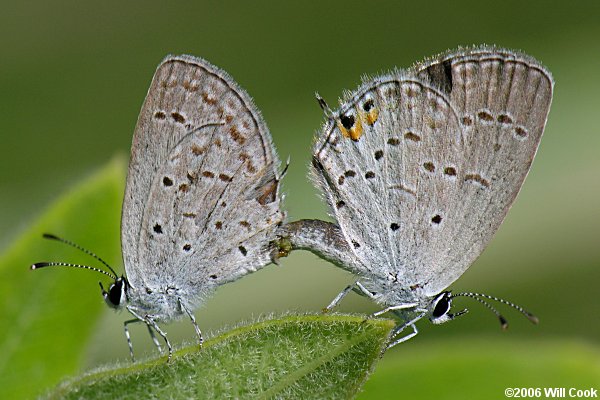
These tiny butterflies are among our most common and widespread species. The host plants are various legumes. Eastern Tailed-Blue has even adapted to use the invasive exotic weed Lespedeza cuneata, which certainly helps increase its abundance.
Mated pair - the female is on the right, as you can tell by the gray upper surface of the forewing showing.
Orange Co., NC 6/15/06.
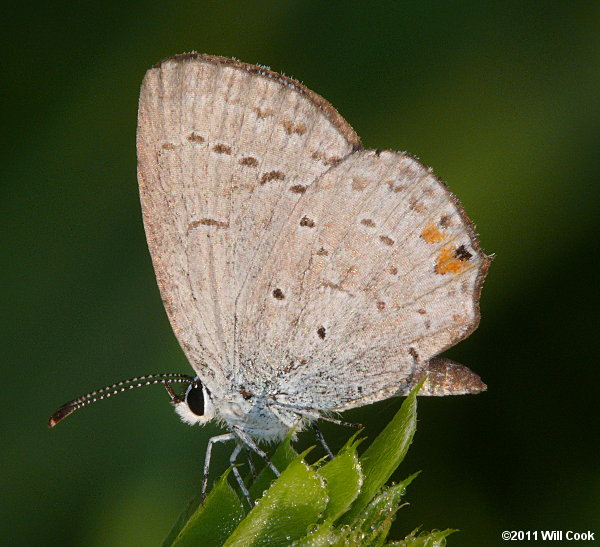
Granville Co., NC 5/1/2011.
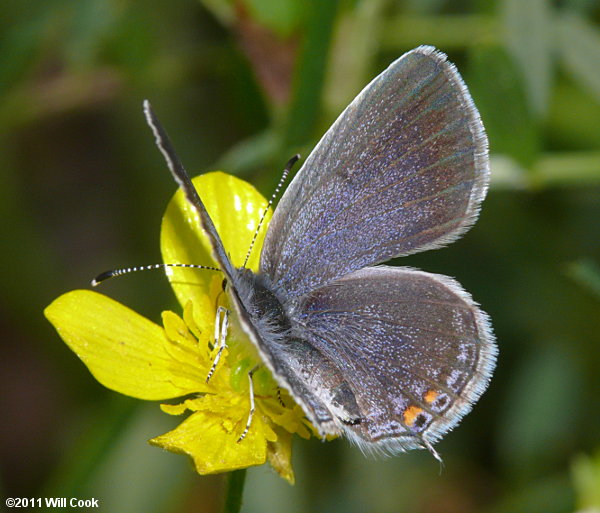
Granville Co., NC 5/1/2011.
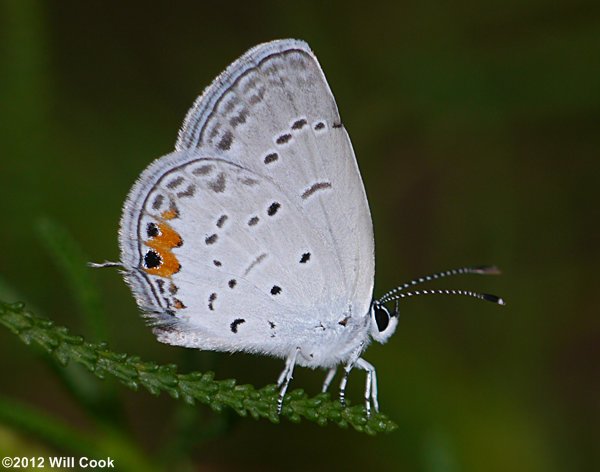
Durham, NC 7/25/2012.
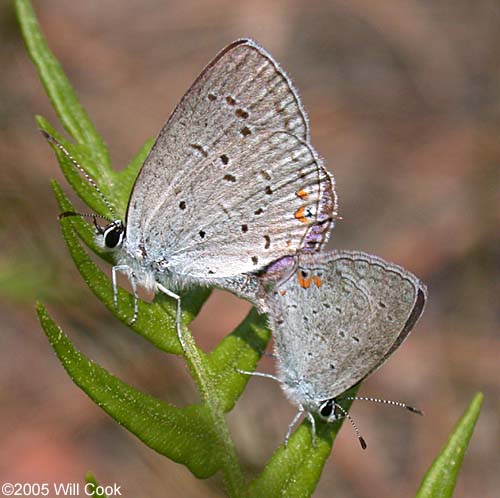
Mated pair - the male is on the left, showing some violet on the upperside of the hindwing.
Richmond Co., NC 4/20/05.
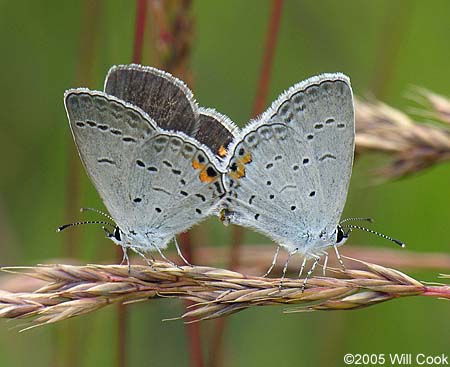
Mated pair - here the female is on the left, showing gray uppersides.
Alleghany Co., NC 6/25/05.
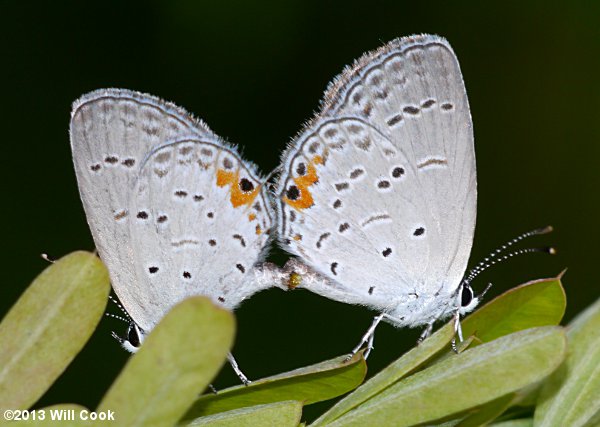
Mating on the most common host plant nowadays, the exotic invasive Lespedeza cuneata.
Durham Co., NC 8/23/2013.
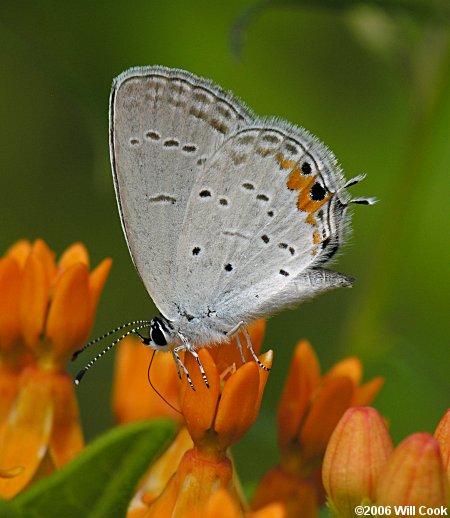
Nectaring on Butterflyweed (Asclepias tuberosa).
Person Co., NC 6/13/06.
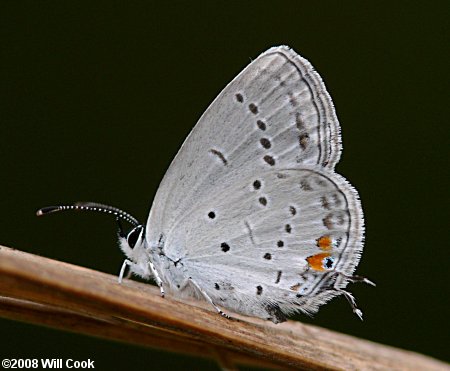
Granville Co., NC 4/27/08.
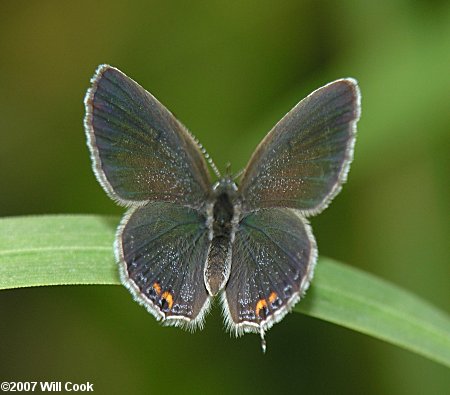
Alleghany Co., NC 7/6/07.
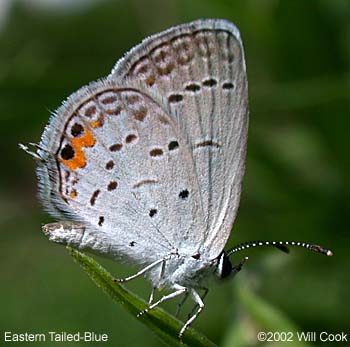
Durham Co., NC 6/22/02.
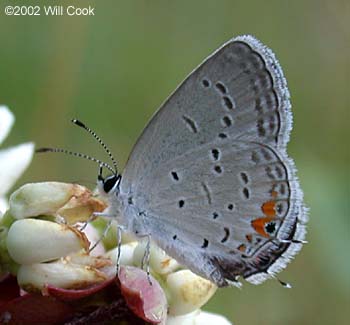
Carroll Co., VA 6/29/02.
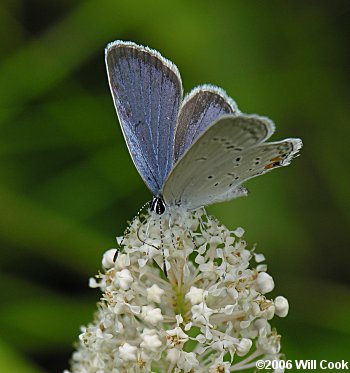
Males are dark blue above. This one is nectaring on New Jersey Tea (Ceanothus americanus).
Person Co., NC 6/13/06.
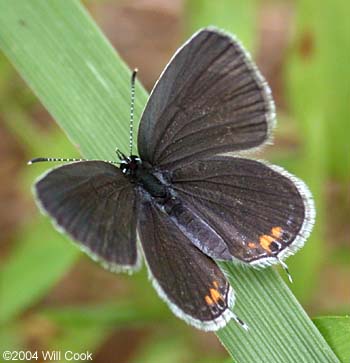
Females are dark gray above. Orange Co., NC 5/19/04.
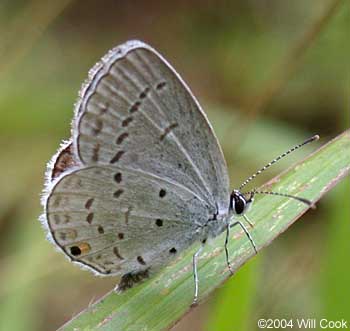
Eastern Tailed-Blue ranges at least as far south as Panama. This one is quite similar to the version we have in North Carolina. Note that the tail on this side is worn off. Caba�as Burbayar, Panama, 4/2/04.